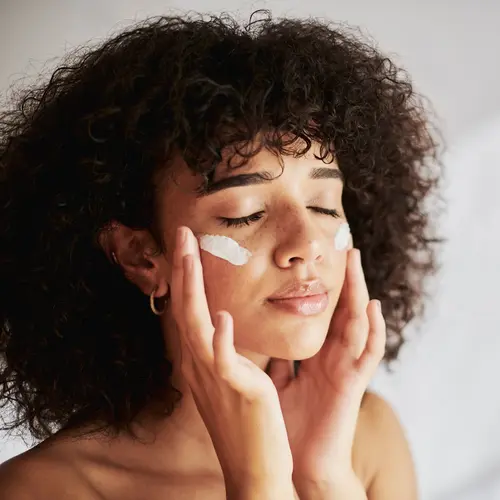With age comes wisdom, experience, and something you may welcome less: gray hair. You can't prevent graying, but you can banish it temporarily with color.
The goal when covering gray is to look like you didn't. These tips can help make your new color look as natural as possible.
The Challenge
Gray hair poses some unique challenges. It's coarser than your natural hair, and gray hair follicles make less oil, making it drier as well. This makes it harder for color to penetrate, so you may have to leave it on longer, which can cause more damage.
Coloring Options
“The biggest question you need to ask yourself is: Do you want to completely cover the gray or help it blend with your natural hair color?” says Brian Keller, senior colorist at Frederic Fekkai Salon in Los Angeles. He has worked with Stockard Channing, Olivia Newton-John, and Gillian Anderson.
This choice helps point to the type of coloring agent you should use. Permanent color is best for total coverage, while semi- and demi-permanent formulas are ideal for blending gray with your natural color.
Salon Color Treatments
They're more expensive than home coloring, but salon treatments can produce more nuanced color with less damage to your hair, stylists say. “Salon color formulas are more moisturizing," says Kitty Greller, color director of Ted Gibson Salon in New York. Laura Dern, Christina Ricci, and Georgia May Jagger are among the salon's clients. "And color can be customized in the salon. Professional products also have more advanced technology that produces subtle variations in color or stops color from getting too dark."
Dying a full head of hair with a permanent treatment can lead to flat, uniform color. If your hair is less than 50% gray, Greller recommends getting a demi-permanent treatment with lowlights -- select areas of darker color. Your colorist can add different hues and warm or cool tones to achieve the most natural result, she says.
To create the salt-and-pepper look that many men prefer, Greller uses darker lowlights. You don't have to touch the color up as frequently because the gray regrowth blends in better with natural hair color.
Keller likes the balayage technique for the most natural look. It involves “painting” highlights and lowlights onto the hair instead of separating the hair to be highlighted with foils. The result is more free form and you can go about a month longer between treatments, he says.
Single-process color -- one color over your entire head -- is the least costly way to go. When you add highlights, the price goes up. Balayage can cost up to $250 in some cities because of the skill and labor involved.
Home Color Treatments
For DIY coloring, Keller recommends choosing an ammonia-free color treatment, which is less damaging to hair. Choose a shade that closely matches your natural color. And buy up to three boxes if you have thick hair -- you may need them all.
“Going too dark is one of the biggest mistakes women and men make when coloring gray hair themselves," Keller says.
Follow the directions on the box carefully. "Don’t leave it on longer, because it will keep getting darker," Greller says.
When the roots start growing out, Greller suggests applying color only to the visible gray -- don't pull it all the way through the rest of your hair. “All-over color may look great at first, but after 9 months, you’ll have color buildup on the ends," she says. "Applying new color over existing color makes hair even darker."
Salon Tips to Make Color Last
Whether you color your hair in a salon or at home, it can cause dryness or damage. Try these tips to maintain healthy hair and stretch the time between treatments:
- Wash your hair only as often as you need to with a sulfate-free shampoo and follow with a conditioner with silicone. Keller says violet-based shampoos work well for removing dull, yellow tones.
- Keller suggests using a boar bristle brush to distribute natural oils throughout the hair shaft. "Shiny hair looks more youthful," he says. But be careful: Dermatologists caution that boar bristles can damage hair.
- For quick root camouflage, part your hair differently. “Move it 1 inch to the left or right, and you might find there’s no gray," Greller says.


